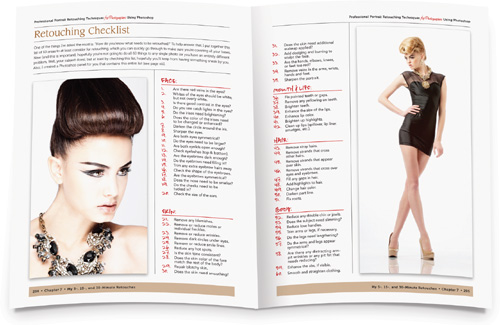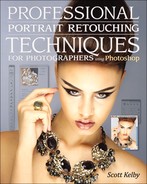Seven Things You’ll Wish You Had Known Before Reading This Book
It’s really important to me that you get a lot out of reading this book, and one way I can help is to get you to read these seven quick things about the book that you’ll wish later you knew now. For example, it’s here that I tell you about where to download something important, and if you skip over this, eventually you’ll send me an email asking where it is, but by then you’ll be really aggravated, and well...it’s gonna get ugly. We can skip all that (and more) if you take two minutes now and read these seven quick things. I promise to make it worth your while.
#1 This book was written for photographers—not photo retouchers
Most photographers aren’t able to send their images out to a full-time, high-end retoucher, so we wind up doing our own portrait retouching in Photoshop. That’s exactly who I wrote this book to help—photographers who want better, faster, more realistic results from their own portrait retouching. The key word here is “photographers.” This isn’t a book to learn how to become a high-end portrait retoucher (which is a very hard job, done by highly skilled, and very patient, professionals who take whatever time and steps are necessary to create absolutely perfect images. I have immense respect for these folks, who spend an average of four hours on a retouch, and as much as two to three days on a single cover image). However, as photographers, we usually don’t get paid for the retouching part of our jobs, so we need to get back to shooting as quickly as possible. That’s why I only focus on teaching you the fastest, easiest techniques to get your retouching done in as little time as possible. That means doing things that some high-end retouchers would definitely wrinkle their brow over, but when you make your living from shooting, you need to get back to shooting. That’s what this book is about—quick, efficient techniques for great-looking, natural retouches that make you, and your subject, look great.
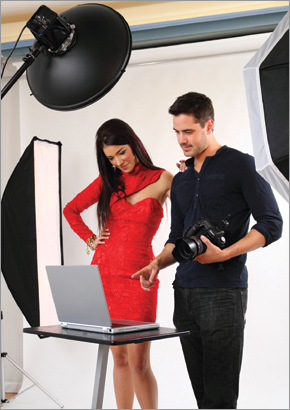
©ISTOCKPHOTO/GCHUTKA
#2 Download the practice images, so you can follow right along with me
I’ve made all of the photos I used here in the book available for you to download, so you can follow right along with me as we work. For this book, though, I added something extra—a second practice file, so you can try the same technique you just learned on a totally different image. With retouching, it’s the repetition that builds your speed, so this is another way for you to take what you’ve just learned and apply it somewhere else. You can download the images at www.kelbytraining.com/books/retouching (see, this is one of those things I was talking about that you’d miss if you skipped this and went right to Chapter 1).
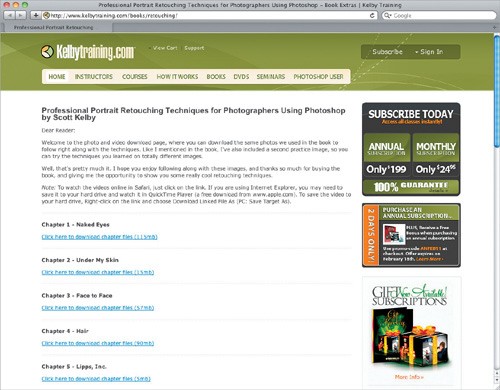
#3 You don’t have to read this book in order
I designed this book so you can turn right to the retouching technique you want to learn and start there. I explain everything as I go, step by step, so if you want to learn how to sharpen your subject’s eyes, just turn to page 81, and in a couple of minutes, you’ll know how.
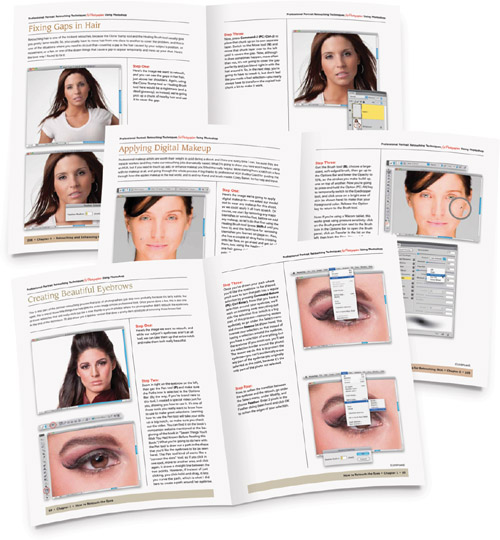
#4 The intro pages at the beginning of each chapter are not what they seem
The chapter introductions are designed to give you a quick mental break between chapters, and honestly, they have little to do with what’s in the chapter. In fact, they have little to do with anything, but writing these quirky chapter intros has become kind of a tradition of mine (I do this in all my books), so if you’re one of those really “serious” types, I’m begging you—skip them and just go right into the chapter, because they’ll just get on your nerves. However, the short intros at the beginning of each individual technique, up at the top of the page, are usually pretty important. If you skip over them, you might wind up missing stuff that isn’t mentioned in the technique itself. So, if you find yourself working on a technique, and you’re thinking to yourself, “Why are we doing this?” it’s probably because you skipped over that short intro.
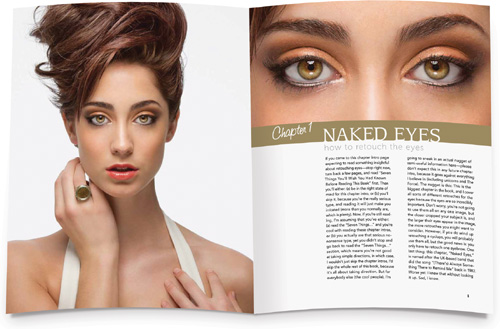
#5 I included a chapter on my own start-to-finish retouching workflows, but don’t read it yet
At the end of the book, I included a special chapter detailing my retouching workflows for a 5-minute, 15-minute, and 30-minute retouch, but please don’t read it until you’ve read the rest of the book first, because it assumes that you’ve read the book already, and understand the basic concepts. So, it doesn’t spell everything out (or they would be really, really long, drawn-out workflows). In this chapter, I refer back to things you’ve already learned, and if you haven’t learned them...well...you’ll get kinda stuck there. So, do yourself a favor—read the first six chapters first, then do the workflows.
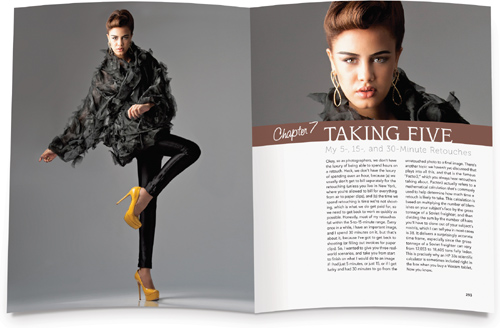
#6 Do I need to do all this stuff?
Absolutely not. In fact, the goal is to do as little as possible, and be as subtle as possible, so if you can finish off an image with just two or three techniques from the book, that’s fantastic. If you find yourself using 20 or more techniques, maybe it’s time to find some better looking subjects (kidding, just a joke). I just don’t want you to think that you have to apply everything in this book to every photo. Start by evaluating the image and what needs to be done. I always start by looking at the image and asking myself, “What do I wish here was different?” (For example, I wish his teeth weren’t yellow, and that he didn’t have that big mole on his neck, and all those stray hairs across his face.) Then you turn to the pages with those techniques and apply just the ones you need. Retouching is one of those “less is more” things.
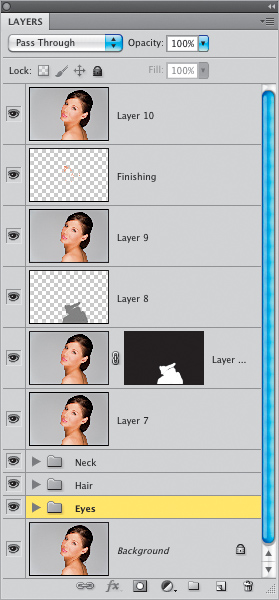
#7 I made you a Retouching Checklist
One of the things photographers ask me the most is, “How do you know what to retouch?” So, I made you a checklist of things to look for. Now, you don’t have to do all the things on the checklist (in fact, if you do, perhaps retouching shouldn’t be your biggest concern), but at least you’ll have a list to make sure that nothing that needs to be retouched slips by you. I put this checklist right before the workflow chapter that’s at the end of the book (you’ll find it on page 294). Also, I took it a step further by creating a custom Photoshop panel, so you won’t even have to pull out the book—the panel will be right inside Photoshop. You can download it at www.kelbytraining.com/books/retouching. See, I told ya I’d make reading this worth your while.
